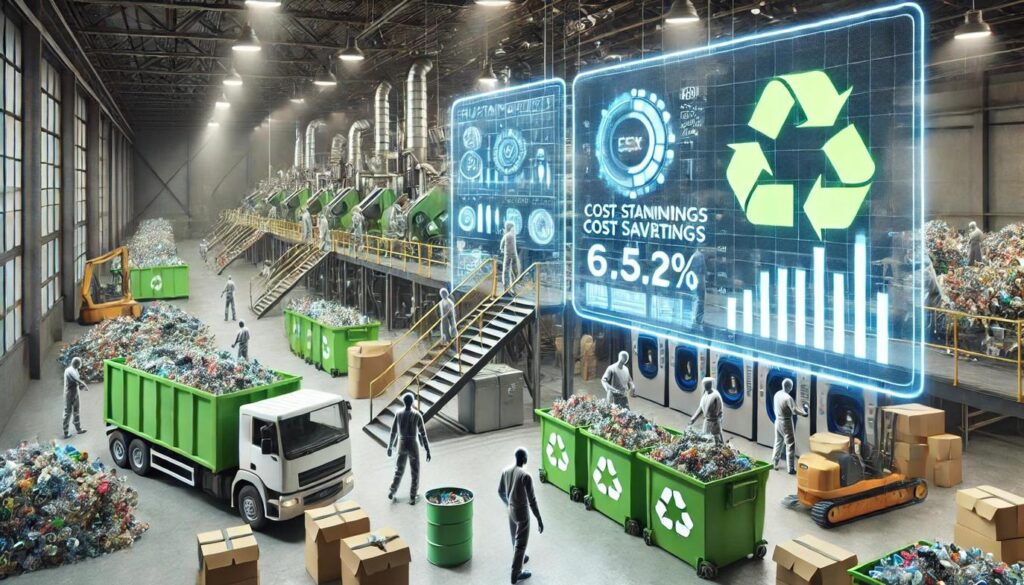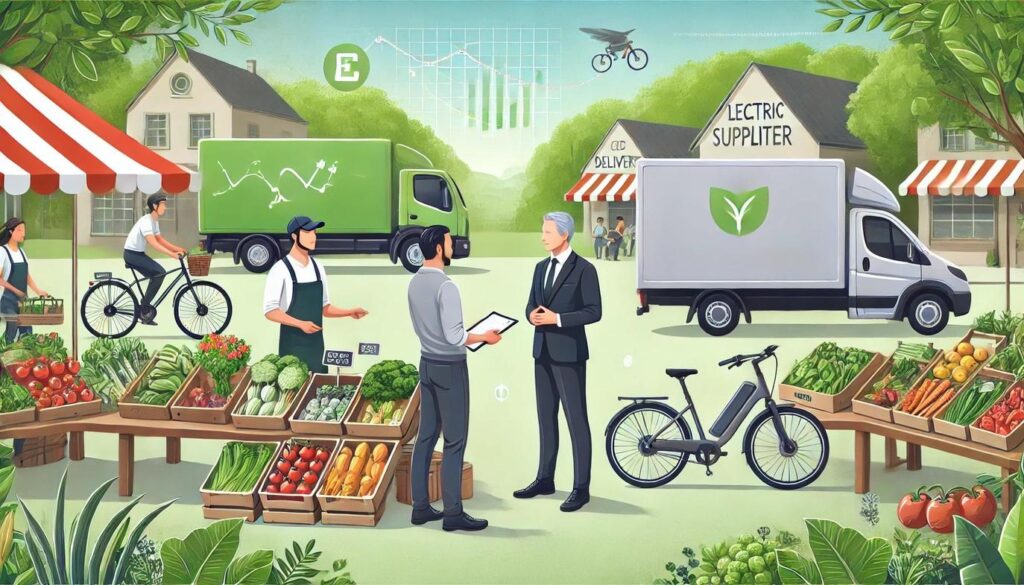Cutting emissions and waste isn’t just a good idea anymore—it’s something every business needs to focus on. Logistics is a major contributor to emissions, but by adopting smarter practices, businesses can reduce transportation-related emissions by up to 40%.
Smart Logistics Improves Business Operations
Simple things like using electric delivery trucks, planning shorter routes, and sourcing products closer to home make a huge difference. When businesses reduce how far goods travel, they’re cutting emissions, saving fuel, and making their operations more efficient.
Packaging offers a valuable opportunity for businesses to make a significant impact. By using less packaging and opting for eco-friendly materials, organizations can effectively reduce waste and contribute to environmental preservation.
Cut Emissions and Enhance Efficiency
But why does any of this matter? The less waste and emissions we produce, the better it is for our environment—and the more sustainable your business becomes. These shifts in business logistics benefit the environment while enhancing a brand’s sustainability profile, appealing to eco-conscious consumers.
Local Sourcing: Reducing Emissions Simplifies Sustainable Business Practices
When products are sourced locally, businesses immediately reduce the carbon footprint that comes with long-distance transportation. It’s one of the easiest and most effective ways to cut emissions right from the start, without needing complicated solutions.
Local Economies: Advantages for Business Efficiency and Job Creation
When businesses buy from local suppliers, they get to give back to the community, support local economies, and help create jobs that keep communities strong. Local sourcing enhances operational efficiency by reducing shipping distances.
Using local suppliers streamlines logistics and fosters stronger community ties while supporting sustainable practices. This strategy allows businesses to decrease lead times and lower shipping costs, ensuring products reach customers more quickly and affordably.
And here’s another element to consider: for customers, local sourcing often means fresher products. It’s a simple but powerful way to provide high-quality goods with a much smaller environmental footprint.

Smarter Packaging: Waste Reduction and Eco-Friendly Materials
Most people don’t realize just how much waste packaging generates, but it’s a huge issue. But there is some good news: businesses don’t need to sacrifice quality to reduce waste.
Green Packaging Solutions Cut Costs while Maintaining Quality
When less packaging and eco-friendly materials are used, businesses can significantly cut down on waste without compromising the safety of the product. Think about all the unnecessary plastic and layers of packaging that could be avoided.
Smarter packaging significantly reduces waste while also cutting costs. Using less packaging directly translates to savings on materials and shipping expenses. This approach not only benefits the environment but also boosts a company’s bottom line, making sustainable practices both economical and practical.
Optimized Delivery Routes
Delivery routes are one of the biggest factors in logistics, and getting them optimized can lead to amazing wins. When businesses plan smarter routes, they can cut down on fuel costs, reduce emissions, and save money, all in one go.
Smart Logistics Reduce Fuel Costs and Improve Customer Satisfaction
In other words, the less time delivery vehicles spend on the road, the fewer emissions they’re pumping into the air. Efficient route planning enhances delivery times, resulting in satisfied customers who receive their products more quickly. By optimizing logistics, companies not only streamline operations but also boost customer satisfaction.
Impact of Smart Route Planning on Emissions, Customer Satisfaction, and Cost Savings
Also, smarter route planning also helps businesses deliver more reliably and consistently, which improves the overall service they offer. In fact, companies that use route optimization tools have seen up to a 20% reduction in fuel consumption. This means they are slashing emissions, and they’re also saving on gas and making their operations more efficient.
This is the kind of improvement that has a ripple effect across the business: better service, lower costs, and a positive impact on the environment.

Transforming Waste into Wealth
Instead of throwing out unsold products, damaged items, or returns, businesses can find ways to reuse or recycle them, cutting down on unnecessary waste.
Instead of discarding unsold products, damaged items, or returns, businesses can find innovative ways to reuse or recycle them, cutting down on unnecessary waste. Creative solutions, like refurbishing items or converting materials into new products, can transform potential waste into valuable resources that contribute to a more sustainable operation.
Reverse Logistics and Recycling Drive Sustainability and Profitability for Businesses
This process opens up avenues for businesses to convert waste into new revenue streams through strategies like refurbishing products and reselling returned items.
Implementing these strategies allows businesses to unlock financial potential while actively reducing their environmental footprint. Moreover, this shift encourages a more sustainable mindset, appealing to consumers who value responsible practices in the brands they support.
It’s also a great way to improve sustainability by keeping things in circulation longer. By ensuring the reuse and repurposing of products and materials, this approach supports circular economics, thereby reducing waste and promoting a more sustainable lifecycle.

On the Right Track from Day One: RFP Templates
Alignment with your goals and expectations is key when working with any business partner, and it really sets the tone for success right from the start. Having a shared understanding from the outset is crucial, and this is where RFP templates come into play.
Streamline Logistics with RFP Templates
RFP templates are very helpful when it comes to efficient logistics and sustainable consumption because they help businesses focus on what really matters.
Using an RFP template allows businesses to clearly define their needs when selecting a logistics partner. Whether the focus is on reducing emissions, enhancing delivery times, or lowering costs, a well-structured RFP ensures alignment with sustainability goals and operational objectives.
A Strategic Approach to Sustainable Procurement and Emission Reduction
You’ll also be able to avoid endless back-and-forth, and you won’t have to waste time with proposals that miss the mark. According to experts at RFPHub, these templates make the process faster, clearer, and way more efficient.
RFP templates ensure that businesses select partners aligned with their sustainability goals. This process emphasizes finding not just the lowest-cost option, but one that genuinely supports an organization’s commitment to green practices.

Reducing Waste and Emissions Through Efficient Logistics
There will always be a focus on reducing waste and emissions. Individuals and businesses increasingly recognize the importance of environmental protection, as safeguarding the planet ensures a better future. Efficient logistics plays a crucial role in this effort, enabling significant reductions in waste and emissions while promoting sustainable practices.
Investing in efficient logistics strategies is a smart move that delivers tangible benefits for both the environment and the bottom line. As businesses adapt to these sustainable practices, they set a powerful example for others to follow, driving collective change toward a greener economy.




